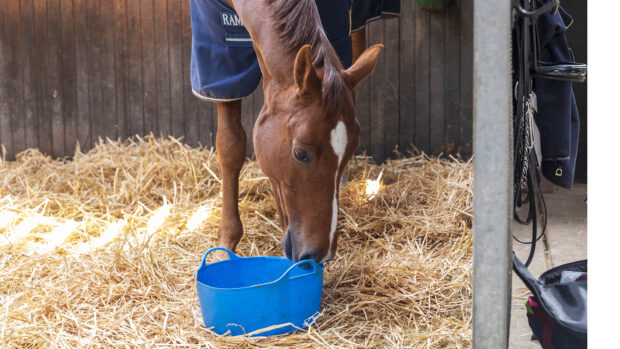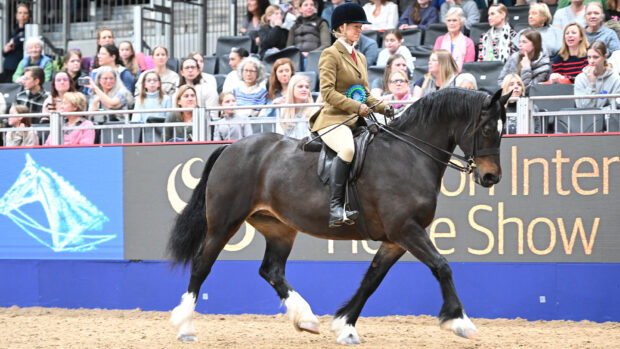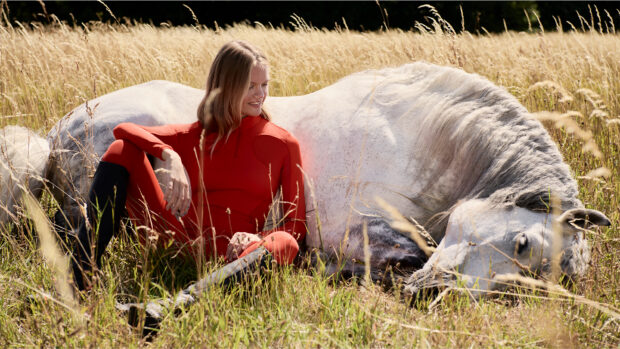The Irish Terrier has dozens of nicknames: the poor man’s sentinel, the farmer’s friend, the gentleman’s favourite and even the red devil. But one thing that holds true to this breed in whatever guise is that this is a plucky, sporting terrier hailing from the Emerald Isle.
In the early days – and the Irish Terrier is one of the oldest of the terrier breeds – size and colour weren’t major factors, with the emphasis being on the dog’s workmanlike qualities, being hardy and game. Black/tan, black, grey and brindle were all common back in the 19th century show ring. Nowadays, however, the breed is known for its coat in various shades of red. It is said that a popular bitch by the name of Poppy had a significant influence on the breed with her exclusively red pups. This colour provoked a reputation of a fiery temperament and daredevil character, and the breed is known for its ability not only to dispatch vermin, and go to ground, but also to retrieve game and quarter the ground more like a gundog, such as a spaniel. However, this courageous, fiercely determined temperament belies a sweet personality – this is a dog who makes a wonderful pet as well as a game little worker.
The bold Irish Terrier has long legs for its diminutive stature, giving it a racy, streamlined appearance and enabling it to cover the ground like a dog of a much bigger size. They are lionhearted in the field, yet tender-hearted companions in the home.

Irish Terrier: fact file
Kennel Club breed group: terrier
Size: small
Daily exercise: at least an hour a day
Coat: medium; shedding
Colours: red, red wheaten, rust, wheaten, wheaten red (small amount of white permissible on chest only). Dark eyes.
Lifespan: more than 12 years
Bark: as a natural guard dog, who will defend their beloved owners with alacrity, the Irish Terrier can be prone to alert barking. However they are not known for excessive barking, simply new threats that they want to make you aware of. If this develops into nuisance barking, here are some tips on how to stop a dog barking for a quieter life.
Distinctive features: active, lively and sporty, with a wiry coat in varying shades of red.
Temperament: plucky, good-tempered and devoted to their master. They are meant to show fire and animation, whether as a family pet, guard dog and hunter. Tends to prefer humans to other dogs.
Things to consider: the dense wiry coat needs weekly attention with a dog grooming brush to keep it looking and feeling its best.
Irish Terriers aren’t always enamoured by other dogs, and certainly have a strong instinct to chase smaller pets!
Training: the Irish Terrier is a sporty little dog, so make the most of their energy and ability. They can excel in all sorts of canine competitions, such as agility, scentwork and flyball events. Although they have a strong character and show a determined side, they naturally love to please their owner and are easily trainable – encourage them with the best training treats, although some may show preference for a particular toy or ball.

Irish Terrier Complete Owners Manual
This book covers everything there is to know about Irish Terriers, including little known facts and secrets and how to care for every aspect of their life.

All about the Staffordshire Bull Terrier

All about the Bedlington Terrier

Faster than a cheetah? Check out the pace of these 7 speedy dog breeds

Does your pooch make the cut? The 15 most popular dogs in the UK – and some may surprise you

Why gundog breeds are the most popular canine group of all, even if many of them will never see a shoot

Subscribe to Horse & Hound magazine today – and enjoy unlimited website access all year round
Horse & Hound magazine, out every Thursday, is packed with all the latest news and reports, as well as interviews, specials, nostalgia, vet and training advice. Find how you can enjoy the magazine delivered to your door every week, plus options to upgrade your subscription to access our online service that brings you breaking news and reports as well as other benefits.




